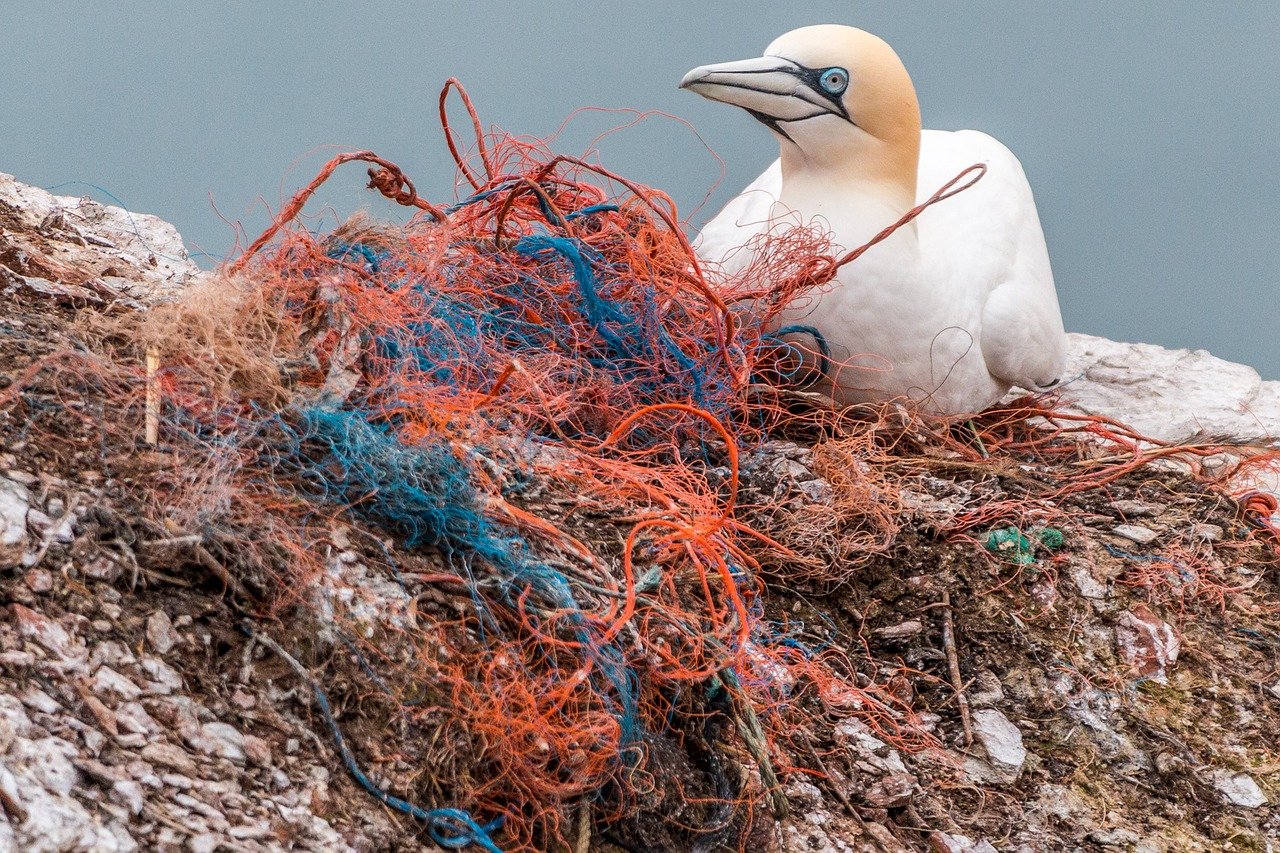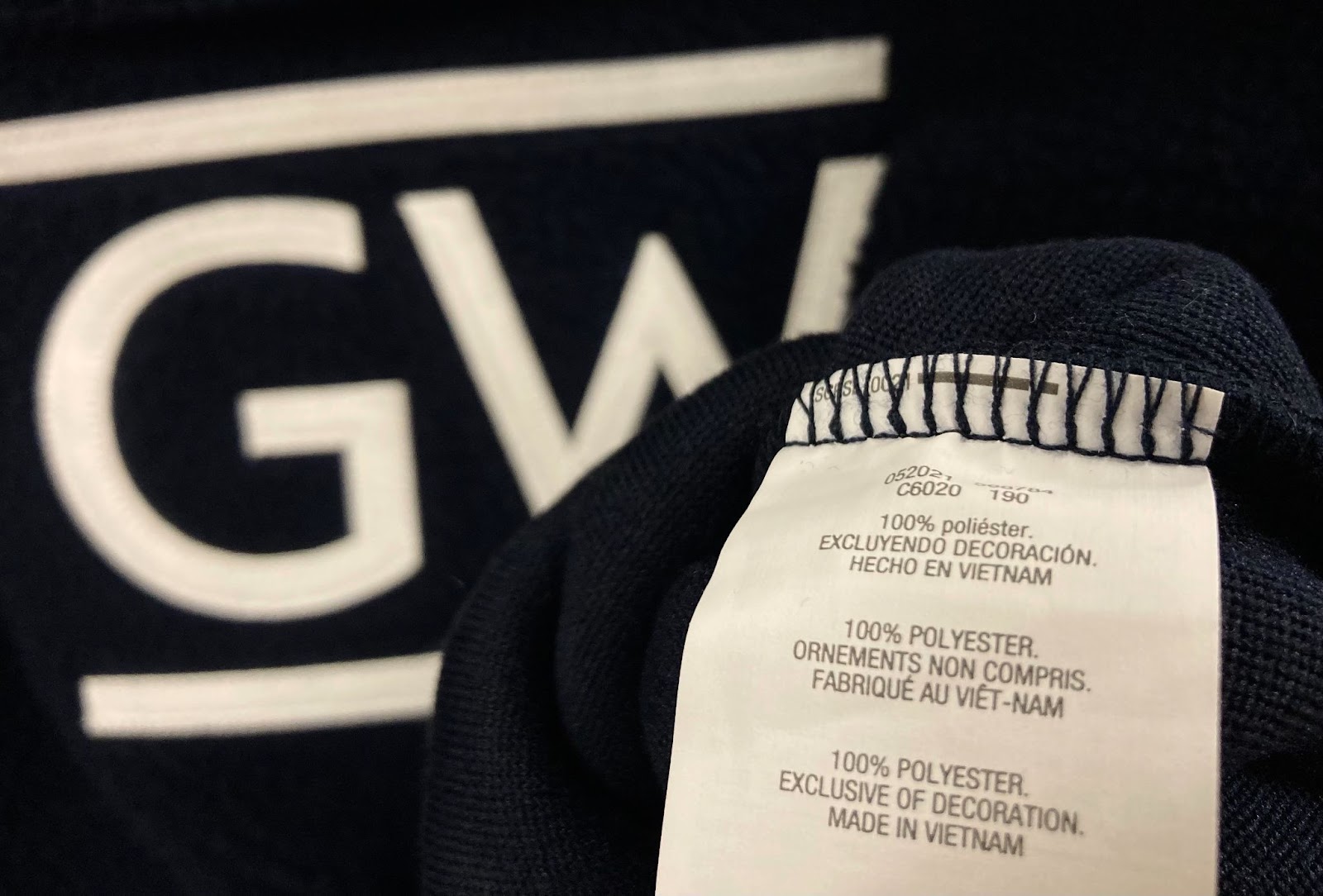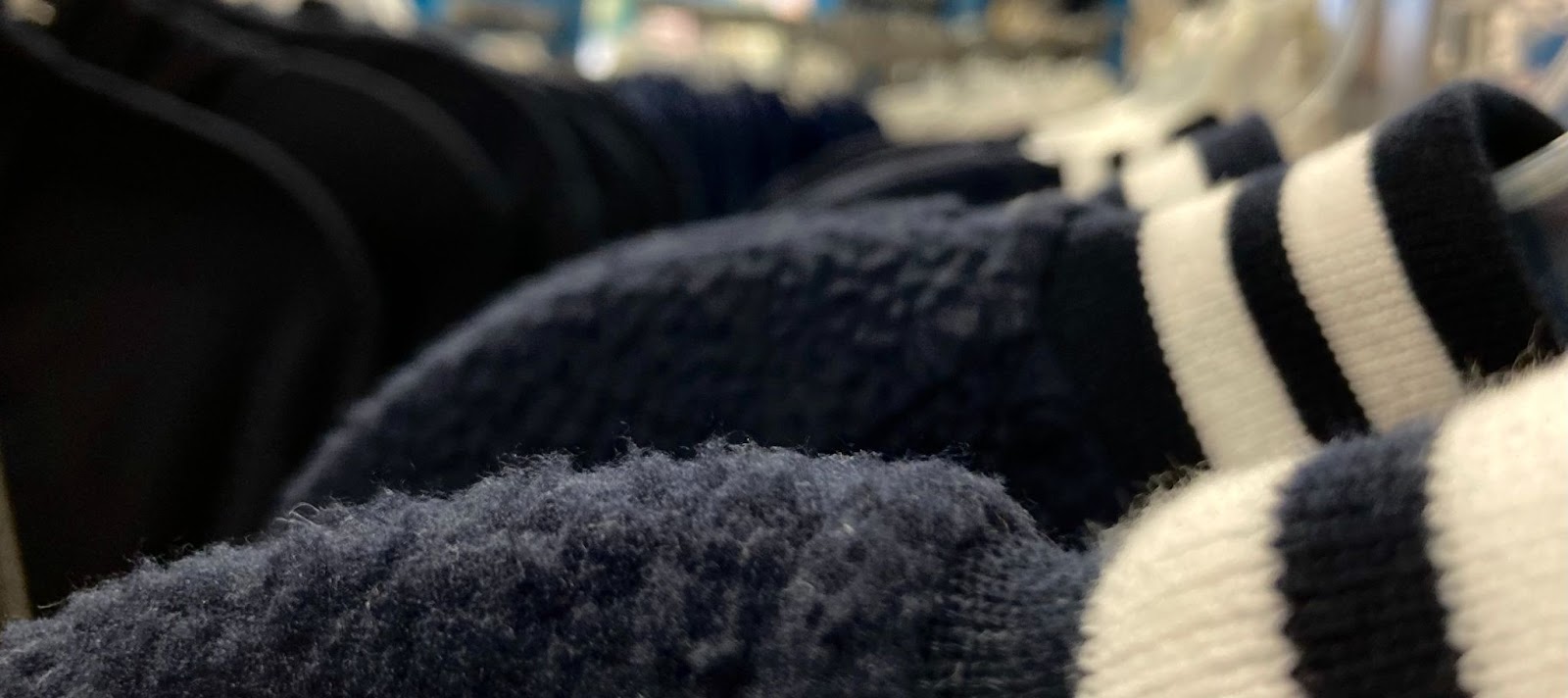
Visible plastic waste (A_Different_Perspective/Pixabay)

Visible plastic waste (A_Different_Perspective/Pixabay)
Do you have an appetite for plastic? Ever crave some cling wrap as a late-night snack? Research says you’ve already eaten plenty. In 2019, the World Wildlife Fund shared that the average person ingests about 5 grams of plastic per week, equivalent to one credit card. We aren’t accidentally biting pieces off of our sporks; the plastic in our bloodstream actually comes from fragments of plastics in our produce and water.
Microplastics are a form of microfibers –– fibers under 5 mm in diameter or just a little larger than a headphone jack. Over time, through washes and wears, our clothes’ synthetic fibers like polyester, nylon, and spandex break down and release microplastics into our water systems or enter waste facilities and are then used as fertilizer and absorbed by our produce. The amount of microplastics released is significant. Domestic washes alone contribute up to 35% of microfiber pollution in the atmosphere. This is a concern because of how pervasive microplastics are. They’ve been found in our drinking water, in produce such as apples, in markets across the US selling seafood, and even in pregnant women’s placentas. Institutions like universities however are more focused on getting rid of visible plastic waste and are neglecting to prevent this major form of pollution now found even in the deepest parts of the oceans.
In an effort to curb the amount of unnecessary plastic waste the school creates, the George Washington University administration issued a Single-Use Plastics Ban in the spring of 2021. The decision has the expected (and debatably impactful) restrictions on plastic utensils and bottles at university events but fails to regulate another significant source of plastic pollution that it’s profiting from: synthetic fibers. It is encouraging to see the university switch from synthetic plastics to bioplastics in their kitchenware, but there needs to be a massive change in the school store as well. To begin, here are three suggested edits for the school’s online and in-person store.
Out of the 70 designs offered for women’s sweatshirts on GW’s bookstore site, only two sweatshirts are fully made from natural fibers, both being cotton crewnecks. The remaining 70 sweatshirts are between 20-100% polyester. The sweatshirts that are fully fleece are of major concern. Researchers found that, on average, synthetic fleece jackets release 1.7 grams of microfibers each wash, which is the mass of about two pen caps. Additionally, out of the ten beanies offered, only one was fully made with cotton; the rest were 100% acrylic.
Solution: Since two sweaters are already made from 100% cotton, GW can reduce its stock of microplastics-shedding sweaters and offer more designs with primarily natural fibers.

Similar to knitwear, the majority of GW-themed blankets offered are made at least partially with synthetic fibers. Only one blanket out of five is fully made from cotton, while another is fully polyester, and the rest are a mix between cotton and either polyester or acrylic. Like a fleece jacket, the fluffiest and coziest blankets unleash the most amount of fiber when they’re thrown around in the washing machine and dryer. Additionally, the 12 bed sheet sets offered on the website are all made out of 100% microfiber which is a synthetic blend between polyester and nylon. While the benefits of these $20 sets are that they are cheap and soft, they imported from an unnamed manufacturer and will inevitably release microplastics.
Solution: Again, GW already offers an option for blankets that is made with natural fibers. If the students are unaware of microfiber pollution and mitigation techniques, the school should step in and not even produce and profit from the synthetic alternatives. Additionally, it might be worth piloting a cotton sheet rental program, like a hotel, as students only live in dorms with XL twin mattresses for a few years and this would offer a sustainable and cheaper alternative to buying new sets of synthetic bedsheets freshman year.

GW signed a 5-year contract with adidas in 2019 to supply its team and fan merchandise. Adidas’ catalog all has 100% recycled polyester items. While some would be intrigued to see the basketball teams don some wool jerseys, GW could account for the polyester items by upgrading the microplastic-catching technology across campus. Institutions have the power to contain microplastic pollution, proven by France that has adopted a law that makes microplastics filters a requirement for new washing machines after 2025. GW could push forward a similar agenda by adding microplastic filters to its laundry rooms’ washing machines. For student-athletes living off-campus, the school could also provide microplastic-catching mesh bags to reduce the microplastic release. Additionally, to replace general synthetic athletic wear offered to all students at GW’s bookstore, biodegradable options could be introduced from companies such as Tripulse and Pangaia. To match the growing demand for sustainable options, particularly by Gen Z-ers, these sustainable apparel companies use Tencel, a light breathable biodegradable fabric made from wood pulp, along with Roica v550, a biodegradable replacement for the typical petroleum-based elastics.
Solution: GW should add microfiber filters to laundry machines on campus and provide microplastic-catching mesh bags to athletes as there are no other team sports-appropriate alternatives. Additionally, the school store could print and display infographics of care tips on how to mitigate microplastic pollution.
––
You may be asking why we should be so fussed over synthetic fibers when cotton and wool fibers also may pass through water treatment facilities. The two main concerns are ingestion and biomagnification. First, scientists are already finding synthetic fiber-filled gastrointestinal tracts in small fish, which is preventing them from eating and digesting actual food. Second, because of these fibers’ porous and hydrophobic properties along with their chemical-heavy production, we put carnivores at most risk of biomagnified chemical poisoning as the chemicals accumulate up the food chain.
GW’s single-use plastics ban just focuses on the more visible plastic waste, but more attention needs to be directed at the issue that’s unknowingly made it into our own bodies. According to polling in 2020, approximately 60% of US consumers have never heard of microplastics before, so it falls on GW as an educational institution to inform its students and the public on the issue. GW’s current disposable plastics ban is a great statement against a well-known issue, but there’s a truly remarkable opportunity for the school to be the first to recall at least part of its school merchandise due to unsustainable and harmful materials. While the university may not have much say over what packaging third-party food vendors on campus offer (as noted in the plan), GW has full control over the designs of the merchandise it orders. If the school and its students are committed to eradicating disposable plastics, they should also consider the microplastics they unknowingly dispose of every time they do their laundry.